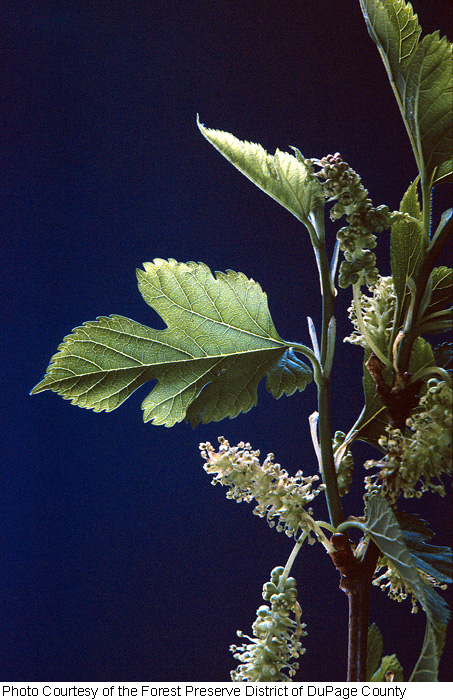Morus
|
Family: Moraceae |
Trees or shrubs , deciduous; sap milky. Terminal buds surrounded by bud scales. Leaves alternate; stipules caducous. Leaf blade ovate to broadly ovate, margins entire or lobed, dentate; venation nearly palmate. Inflorescences pedunculate catkins, erect or pendent, cylindric. Flowers: staminate and pistillate on same or different plants. Staminate flowers: sepals 4 (4-5 in M . alba ); stamens 4, inflexed. Pistillate flowers: sepals 4, green, of 2 sizes, ciliate; ovary superior, 2-locular; style 2-branched, branches linear. Syncarps short-cylindric; each achene enclosed by its enlarged, fleshy calyx. x = 14. Morus nigra Linnaeus has been reported in floras by various authors (J. K. Small 1903, 1933; R. W. Long and O. Lakela 1971), apparently based on dark-fruited M . alba . It is native to Asia, commonly cultivated in Europe for its fruit, and locally naturalized in southern Europe. Occasionally cultivated in North America, it is not known to be naturalized. Because of the similarity to and confusion with M . alba , some American authors place it in synonymy with that species.
Monoecious or dioecious; fls in cylindric catkins, the staminate longer and more loosely flowered than the pistillate; cal deeply 4-parted; stamens 4; style deeply 2-parted; fr a short-cylindric, edible syncarp resembling a blackberry, composed of juicy, accrescent but scarcely coherent calyces, each enclosing a small, seed-like achene, with the remains of the style protruding; trees with alternate, serrate or lobed (often mitten-shaped), palmately veined lvs. 10, widespread. Gleason, Henry A. & Cronquist, Arthur J. 1991. Manual of vascular plants of northeastern United States and adjacent Canada. lxxv + 910 pp. ©The New York Botanical Garden. All rights reserved. Used by permission. |

